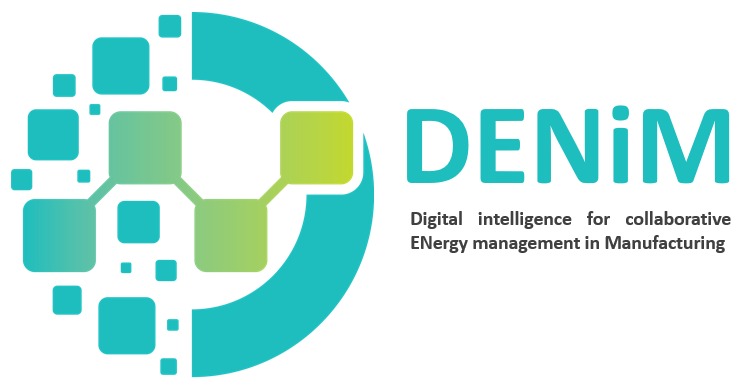DENiM Architecture
DENiM Architecture Design
The DENiM architecture is composed of three vertical tiers, from left to right: 1) the manufacturing site, which contains the physical and virtual components where the DENiM platform is to be applied; 2) the data acquisition and interoperability tier, which contains the link between the manufacturing site and the platform itself and is governed by an edge security layer and the semantic model for data interoperability; and 3) the Digital Intelligence Platform, which implements the data management platform, together with the internal services for the users and applications to interact with it.
The Manufacturing Site contains all the elements that are relevant for the implementation and usage of the Digital Intelligence Platform. It is divided into three blocks. First, we find the production systems/value stream and their corresponding virtual assets. This block includes sensors and control systems from where to acquire preferably real-time streaming data and optionally be retrofitted. Second, the enterprise systems (ERP, MES, etc.) may contain relevant information from the production ecosystem perspective, such as production plans, site configuration, energy consumption reports, etc. Finally, the users involved in the production process, management, and platform usage are captured in the users block. Users represent individuals that have expert knowledge about a specific process or product and support optimisation of same through the use of the DENiM solution, for example, operators, engineers and managers, are included in the users’ block.
The Data Acquisition & Interoperability tier contains the components dedicated to making both stream and batch information available to the platform. For that, data needs to be appropriately acquired, pre-processed when required and forwarded to the system. Streaming data from sensors is gathered by the IoT gateway, which makes the sensors available in a common network for the platform to be able to access them. In order to support the acquisition from multiple communication protocols in a secure way, the Secure edge integration and interoperability manager contains both an edge security management component and an edge pre-processing engine that is able to acquire the data, process it to match the platform semantic model and push it to the platform through a custom connector. This component may also implement preliminary data cleaning, outlier detection or initial data analytics. Batch data coming from enterprise systems or local data stores needs to be mapped onto the semantic data models before communicating it via the DENiM platform. Following this, it is acquired by the data platform through dedicated historical data acquisition technologies that directly send the information to the batch layer.
The Digital Intelligence Platform tier contains the main building blocks of the DENiM solution that uses the data coming from the manufacturing site and produces valuable control and business intelligence utilities.

DENiM Architecture Design
The DENiM architecture is a flexible and functional IoT architecture with the main purpose being providing a digital thread to support the development of digital twin driven models and tools focused on energy and environmental impact assessment. The mapping of the DENiM architecture with the RAMI 4.0 and IIRA reference models is based on the following considerations:
- Real-world sensors, IoT devices, machines, etc., that the platform interacts with correspond to the asset layerin the RAMI 4.0.
- The communication and integration layers of RAMI 4.0 provide communication standards for data, services and control commands that link the physical domain with the digital capability. In the IIRA, the connectivity function refers to standards such as OneM2M and DDS. In DENiM, this maps to the secure edge integration and interoperability manager and the semantic model manager.
- The information layer in RAMI 4.0 refers to the services and data used, generated or modified through the asset. The IIRA has the corresponding management function dedicated to data management. In this layer, we can find the data consultation and subscription manager.
- The functional layer in RAMI 4.0 is dedicated to logical functions and corresponds to the analytics function in IIRA. In the DENiM platform, these functional and analytics capabilities are mainly addressed by the model manager and MLOps pipeline, together with the internal data platform services dedicated to data analytics and processing.
- The business layer in RAMI 4.0 enables the creation of business-level functionalities and business models under specific constraints. In IIRA, the intelligent and resilient control function responds to a similar objective. The DENiM platform will address this need through the architecture manager (which allows for the control and orchestration of the whole platform) and decision support tools. With a view to extensibility an application deployment service is used to enable DENiM developers to deploy their own services on top of the core DENiM data architecture and perform business-level analytics and operations, enhancing the core data services with both general and use case-specific applications. Furthermore, all the additional functionalities external to the data platform can be considered part of this business layer.
